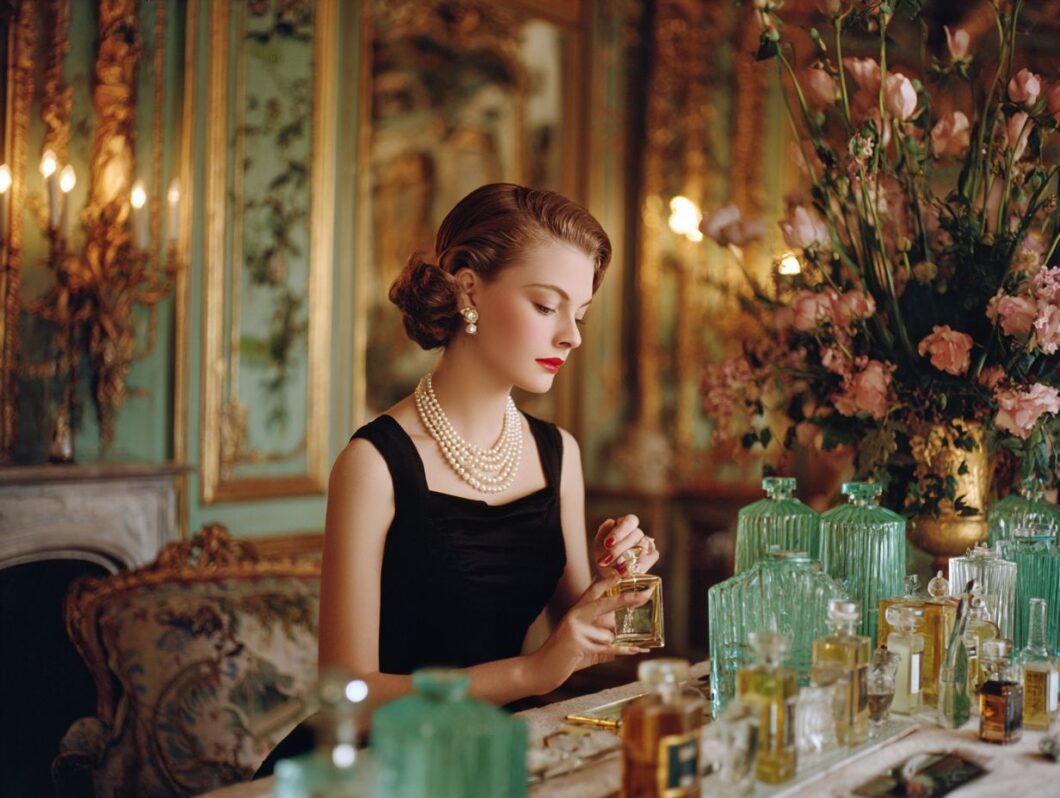A single spritz of fragrance can transform your presence, but navigating the nuances of perfume etiquette can be tricky. Understanding when, where, and how much to spray is essential for leaving a lasting impression without overwhelming those around you. In this exploration, I’ll unpack the intricacies of fragrance concentrations, optimal application times, and key locations for wearing perfume, considering both the elegance of bottle design and the art of scent layering. Join me as we refine our approach to scent and elevate our social interactions to new heights.
Understanding Fragrance Concentrations and Essential Oils
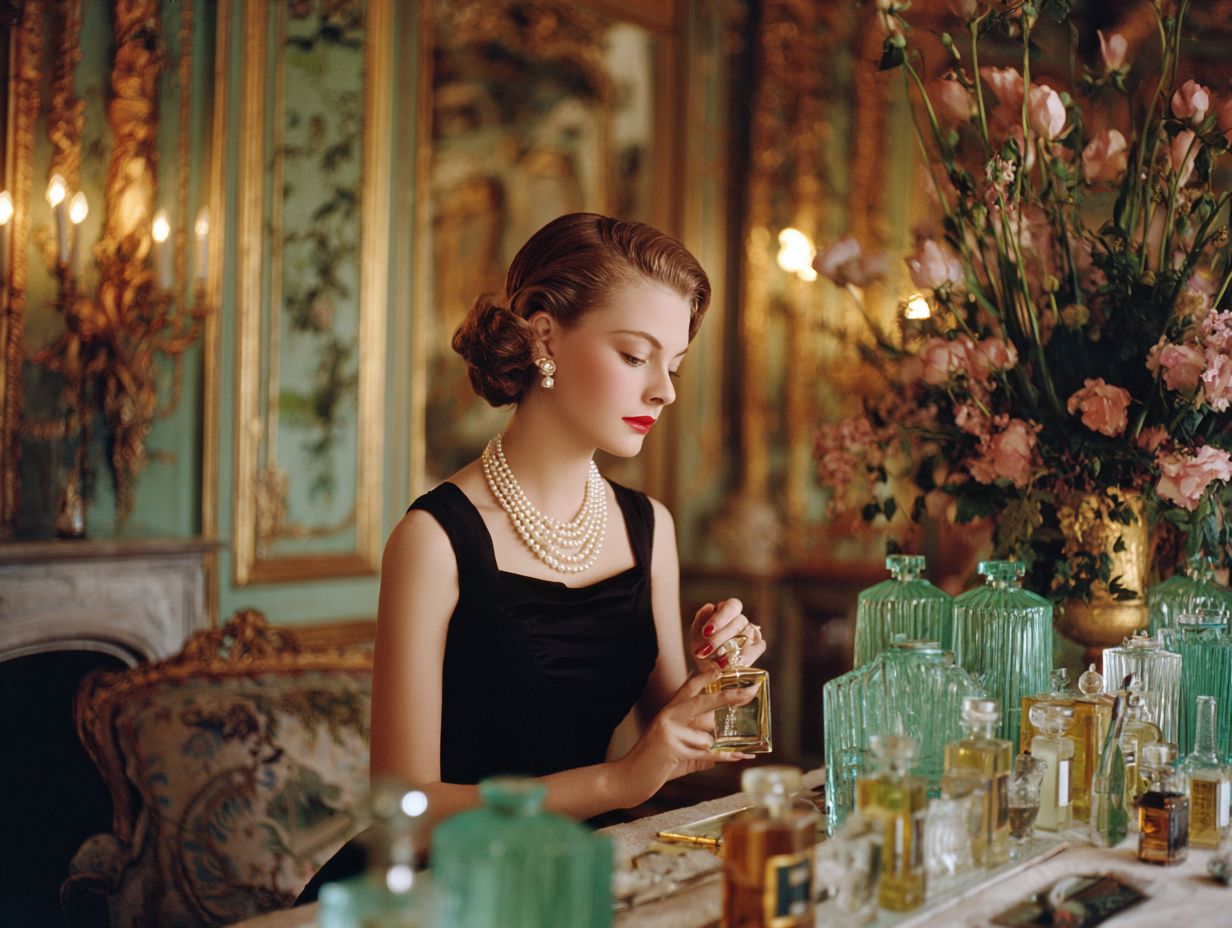
I understand that fragrance concentrations can vary significantly, and being aware of these differences, including the role of essential oils, can greatly impact both the longevity of a scent and the impression it creates.
Eau de Toilette vs. Eau de Parfum: Perfume Types and Their Diffusion
Eau de Toilette typically features a concentration of 5-15%, providing a duration of 3-5 hours, while Eau de Parfum consists of 15-20% concentration, offering 4-8 hours of longevity. The primary distinction between these two fragrance types lies in their composition and intended use.
I often select Eau de Toilette for daytime wear or casual outings because of its lighter scent and more budget-friendly pricing. Conversely, I find Eau de Parfum to be more suitable for evening events, as its higher fragrance concentration delivers a more intense scent.
When choosing between the two, I always consider factors such as the occasion and personal preference, as the longevity and intensity of the fragrance, along with cultural norms, can significantly enhance my overall experience.
Choosing the Right Concentration for the Occasion: Event Appropriateness and Mood Enhancement
Selecting the appropriate fragrance concentration is essential for enhancing my presence. I find that lighter scents work well for daytime, while stronger options are more suitable for evening events.
For daytime occasions, I often gravitate towards floral fragrances like Marc Jacobs Daisy or light citrus scents such as Dolce & Gabbana Light Blue, as they provide a refreshing and energizing lift, aligning with daytime fragrance etiquette.
On the other hand, for evening events, I prefer richer fragrances-warm woody notes like Tom Ford Noir or spicy aromas like Yves Saint Laurent Black Opium create a more seductive atmosphere.
I also take seasonal considerations into account; for instance, warm vanilla notes are ideal for winter evenings, whereas crisp green scents are particularly vibrant during the summer months.
When to Apply Perfume: Understanding Timing and Personal Space
I understand that the timing of perfume application plays a significant role in its effectiveness, and I adhere to specific recommendations for morning versus evening use.
Morning vs. Evening Applications: Tailoring Your Signature Scent
I find that applying lighter scents in the morning, such as citrus or floral fragrances, sets a refreshing tone for the day. For daytime wear, I often reach for options like Dior’s Eau Sauvage with its invigorating citrus notes or Marc Jacobs Daisy, which offers a delightful floral bouquet.
These fragrances uplift my spirits and are well-suited for daytime activities.
Conversely, for evening events, I prefer richer fragrances, such as Tom Ford’s Black Orchid, which artfully combines deep spices and woody notes, or YSL’s Black Opium, known for its indulgent vanilla and coffee undertones, embodying sophistication and allure.
Selecting a fragrance based on the time of day not only enhances my mood but also influences how I am perceived by others.
Seasonal Considerations
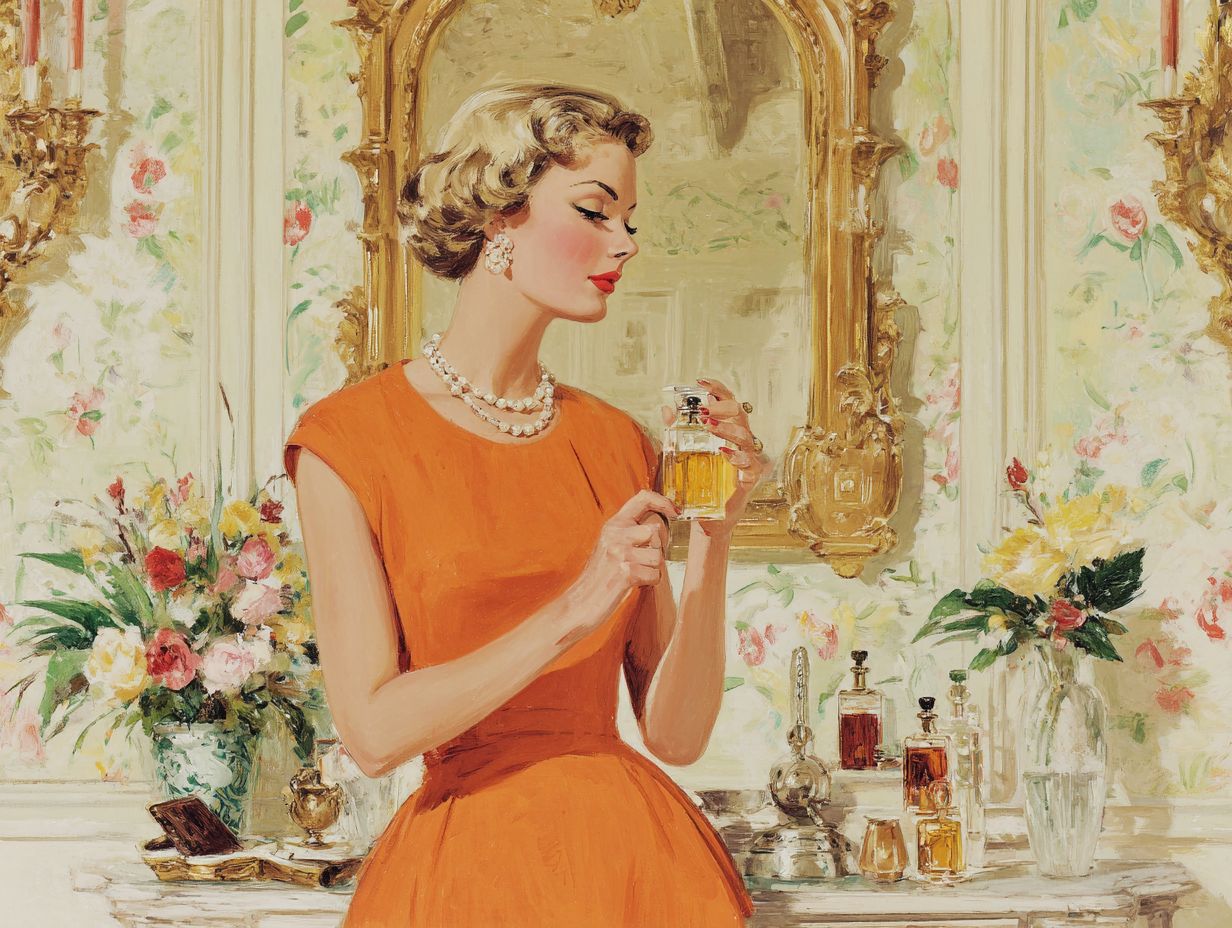
I find that seasonal changes greatly influence my choice of fragrance; during the summer months, I prefer light, fresh scents, while warm, spicy notes are more fitting for winter.
In spring, I gravitate towards floral fragrances like Marc Jacobs Daisy, which features notes of wild strawberries and white violet, evoking a sense of renewal. Conversely, in the fall, I often embrace warmer scents, such as Tom Ford’s Tobacco Vanille, which blends spices and vanilla to create a cozy atmosphere.
During summer, I opt for citrus-based fragrances like Jo Malone Lime Basil & Mandarin, as they offer a refreshing and invigorating experience. In winter, I lean towards rich, bold scents such as YSL Black Opium, with its comforting notes of coffee and vanilla that provide warmth.
Each season presents an opportunity for me to enhance my mood through thoughtfully selected fragrances.
Where to Apply Perfume: Strategic Application Techniques and Scent Projection
I understand that knowing where to apply perfume can significantly enhance its longevity and overall impact.
By targeting pulse points and other strategic areas, I can maximize its effectiveness.
Pulse Points Explained
I recognize that pulse points, such as the wrists, neck, and behind the ears, are areas where blood vessels are situated close to the skin, which enhances fragrance projection and complements the overall scent trail.
To make the most of these pulse points, I apply fragrance directly to these areas after showering, when my skin is warm and hydrated. This approach amplifies both the longevity and intensity of the scent.
Additionally, I consider using a scented body lotion on these points before applying perfume, as it helps create a better base for the fragrance to adhere to, ensuring optimal scent diffusion.
I also avoid rubbing my wrists together after application, since this action can break down the scent molecules. I enjoy experimenting with different pulse points to discover which ones work best for my personal fragrance and body chemistry.
Other Effective Application Areas: Enhancing Longevity and Comfort
Beyond applying fragrance to pulse points, I find that using it on hair, clothing, and even behind the knees can significantly enhance its scent profile and longevity, adding a touch of elegance and sophistication to my presence.
Applying fragrance to my hair not only enriches the aroma but also allows the scent to diffuse gradually over time. A light spritz of my favorite fragrance on my hairbrush before styling ensures a consistent scent without overwhelming intensity.
Regarding clothing, I prefer using a fabric spray, as these are typically formulated to prevent staining. For application behind the knees, I aim for a light touch; this area tends to be warmer, which helps with scent projection throughout the day.
I encourage experimentation with these techniques to find a unique scent signature that works for you.
How Much to Spray: Balancing Application and Over-application
I recognize that understanding the appropriate amount of perfume to apply is essential for creating a memorable impression while ensuring that it does not overwhelm those around me.
General Guidelines for Application: Aligning with Scent Etiquette Rules
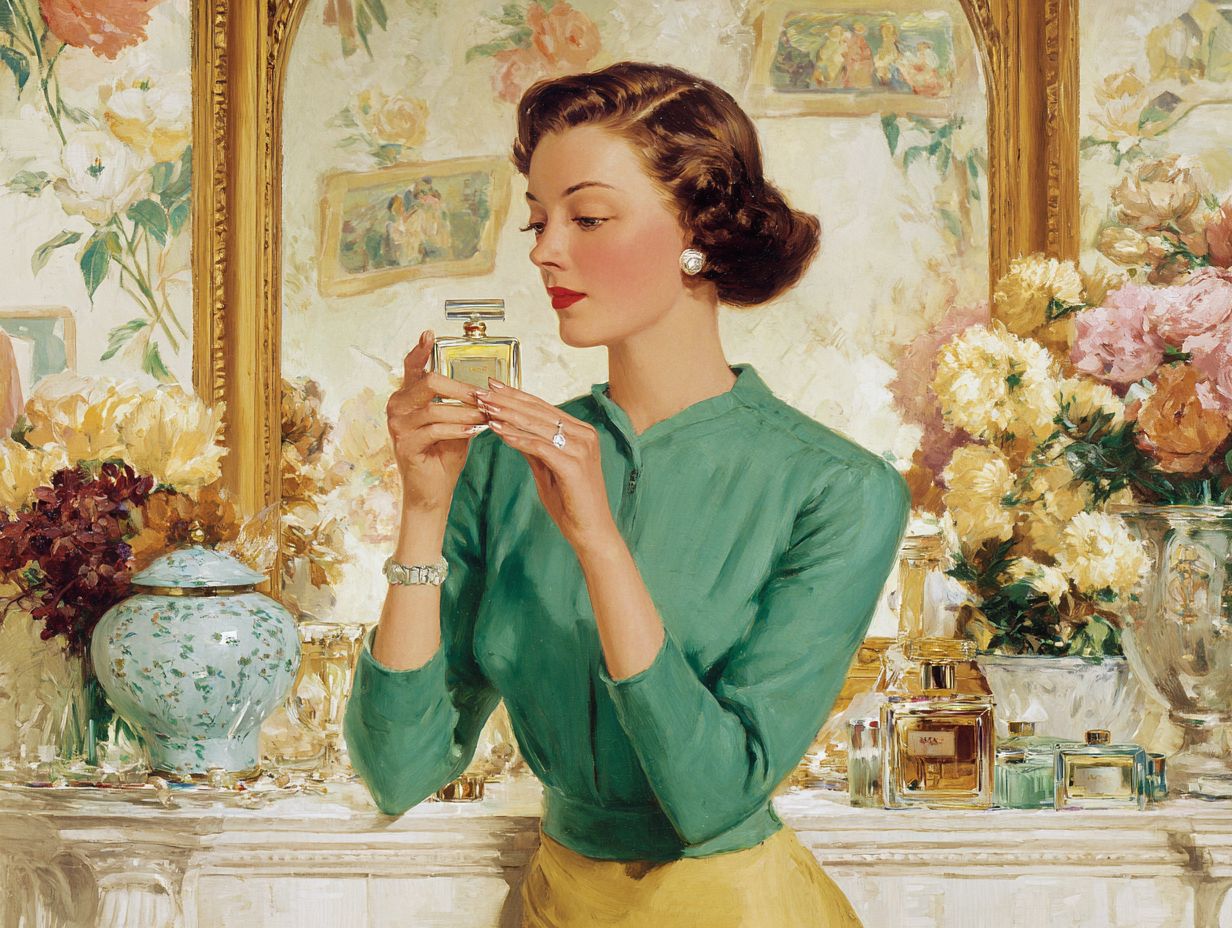
A general guideline I follow for applying fragrance is to use two to three sprays for everyday wear, focusing on pulse points to maximize the effect.
When preparing for an intense evening out, I may increase this to four or five sprays, specifically targeting areas such as the neck and wrists, where body heat enhances the fragrance.
I also take into account the type of scent I’m using; lighter citrus fragrances typically require a lighter application, while richer spices or woods may benefit from a bit more.
Additionally, temperature can influence my approach-I opt for a lighter application on hot days to avoid overwhelming those around me, respecting potential fragrance-free zones.
It’s essential to test how a fragrance develops on my skin, as body chemistry can significantly alter its scent profile.
Adjusting for Different Settings
In intimate settings, such as dates or interviews, I find that applying just one spray of fragrance is a respectful way to maintain personal space and avoid overwhelming others.
Conversely, in more social environments like parties or networking events, I may choose to apply two or three sprays, focusing on pulse points such as my wrists and neck. This approach enhances my presence while remaining mindful not to be overbearing.
I also consider the type of fragrance I use; lighter scents, such as citrus or floral, are often more appropriate for close quarters, while richer, woodsy fragrances are better suited for larger gatherings.
I pay close attention to the reactions of those around me and am always prepared to adjust my application based on their feedback.
Social Considerations: Scent Sensitivities and Personal Space
I believe that social fragrance etiquette necessitates a keen awareness of those in my surroundings, especially regarding the importance of respecting personal space and acknowledging scent sensitivities.
Respecting Personal Space: Navigating Scent Sensitivities and Allergies
Maintaining a respectful distance and limiting my fragrance application is essential to prevent overwhelming individuals with scent sensitivities, which can impact my social standing, especially in fragrance-free environments.
To achieve this, I find that applying fragrance sparingly-one or two sprays-is typically sufficient.
In professional settings, I opt for lighter scents or products labeled as ‘skin scents’ that offer a subtle presence. During social gatherings, I avoid wearing strong perfumes, especially during meals, as overpowering scents can disrupt the dining experience.
I also keep a travel-sized bottle of a neutral body mist on hand for a quick refresh without overwhelming intensity. Being mindful of my surroundings is crucial; when in shared spaces, I choose fragrance-free products to err on the side of caution.
Office vs. Social Settings: Tailoring Fragrance Choices to Environment
In office environments, I find that choosing light, subtle scents is essential, while social settings allow for bolder fragrances, depending on the context.
In a professional setting, I prefer fragrances such as crisp citrus, delicate florals, or light musk. For example, I often opt for colognes with notes of bergamot or lavender, as they create a refreshed atmosphere without overwhelming my colleagues.
Conversely, at social gatherings, I consider richer and more complex fragrances, like deep vanilla or spicy amber, which can create a strong fragrance presence yet remain respectful of personal space.
These scents can enhance my presence and encourage conversation, but I always remain mindful of the environment.
A well-placed spritz can have a significant impact, creating a memorable fragrance journey; however, I make it a point to avoid applying too generously in close quarters, as that can be off-putting and lead to olfactory fatigue.
Frequently Asked Questions
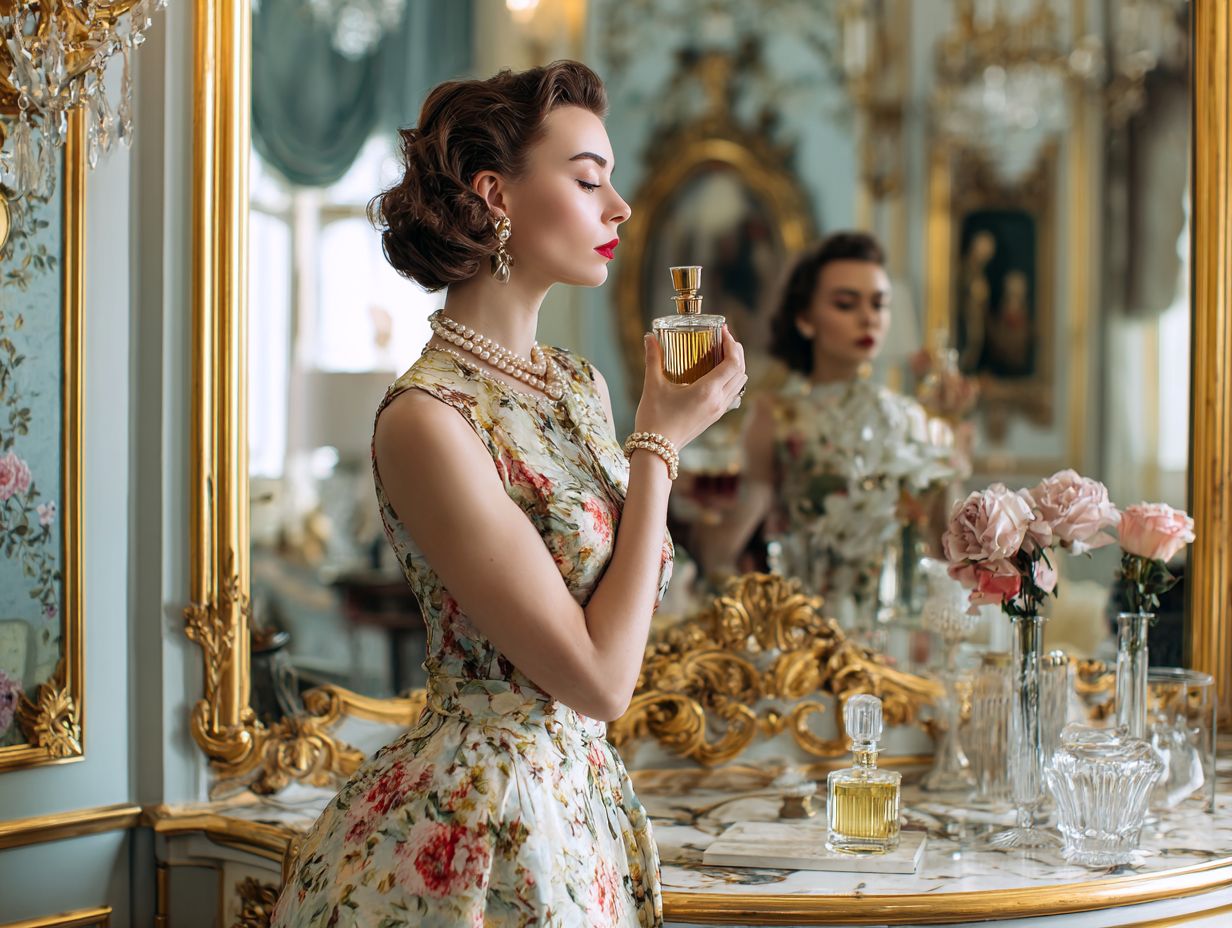
When is the appropriate time to apply perfume for different skin types?
The best time to apply perfume is after a shower or when your skin is moisturized, considering your skin type. Avoid applying perfume before going out in the sun as the alcohol content can damage sensitive skin.
What is the proper way to spray perfume for an effective fragrance journey?
Hold the bottle about 6 inches away from your body and spray the perfume on your pulse points, such as your wrists, neck, and behind your ears. This helps in accentuating the fragrance notes. Do not rub the perfume in, as it can change the scent and make it less long-lasting.
Is it acceptable to wear perfume in a professional workplace setting?
It is best to keep your perfume subtle in a professional workplace setting. Stick to one or two sprays and choose a light, fresh scent that matches the fragrance notes of your outfit. Be considerate of those who may have allergies or sensitivities to strong scents.
Where should I spray perfume on my clothing to enhance seasonal fragrances?
It is not recommended to spray perfume directly on clothing as it can leave stains. However, if you do choose to spray perfume on your clothes, do so from a distance and only on the inside of the fabric, allowing a complementary fragrance to match your ensemble.
How can I make my perfume last throughout the day without reapplication?
Layering your perfume with a matching scented body lotion or using a fragrance primer can help make your perfume last longer. Reapplying your perfume throughout the day is also a good way to maintain the scent. Consider using travel size bottles for convenient reapplication during casual meetups or public spaces.
How much perfume should I apply for a romantic date or night out?
For a romantic date or night out, it is acceptable to use a little more perfume than your daily amount, perhaps choosing scents from perfume families such as oriental or unisex. However, be cautious not to overdo it and stick to a maximum of 3 sprays in total to maintain freshness and intimacy.


